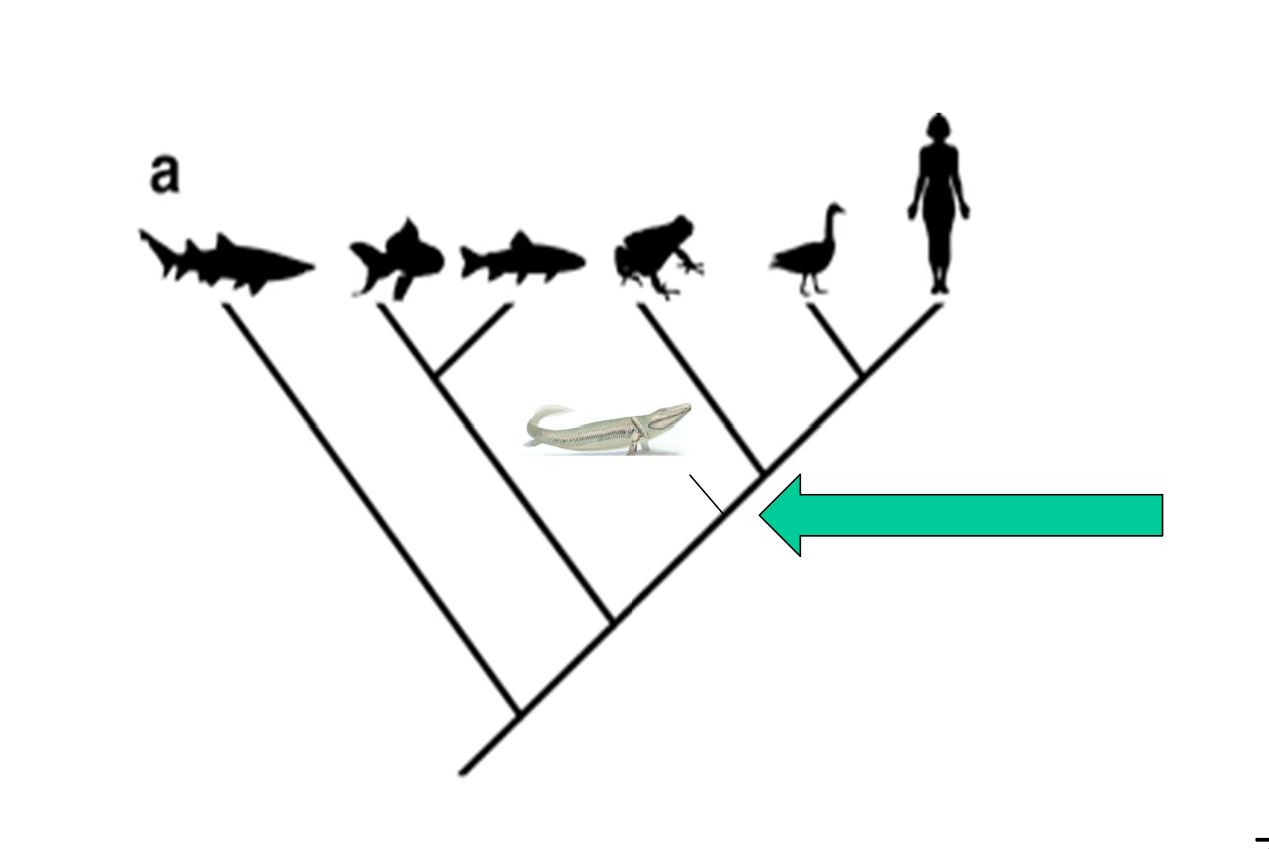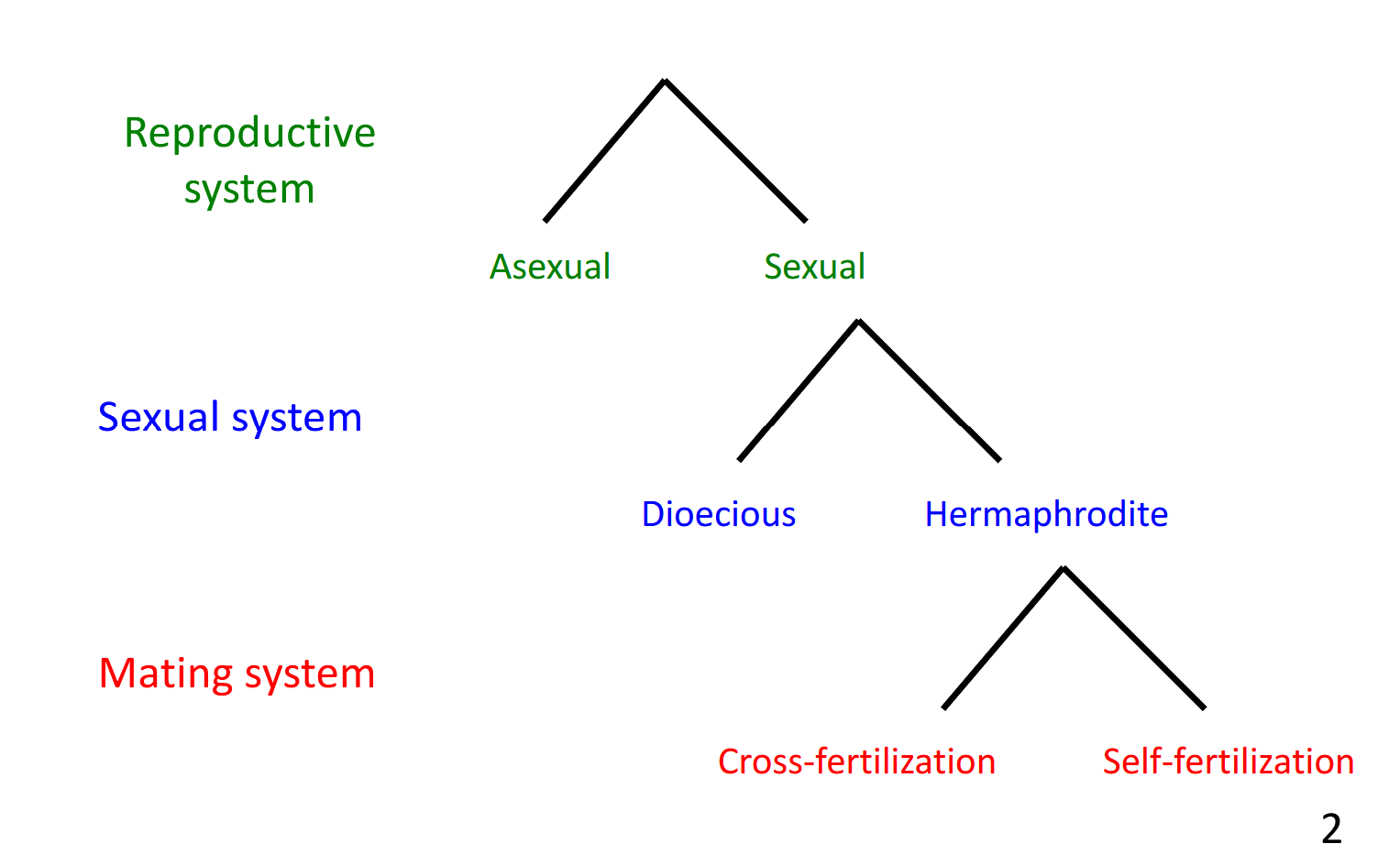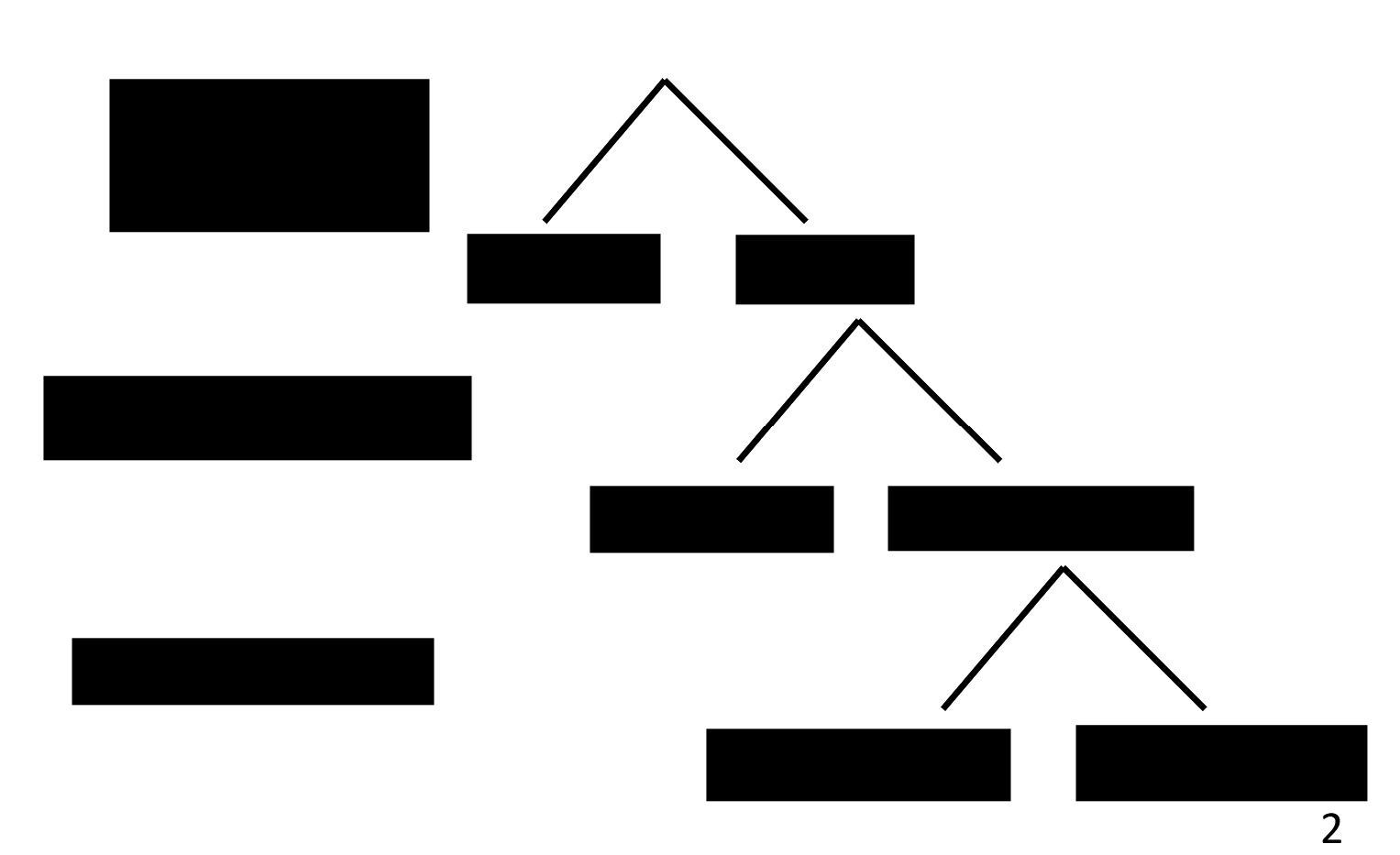BIO120 - EXAM NOTES - EVOLUTIONARY BIOLOGY LECTURES
1/181
Earn XP
Description and Tags
Exam Review!
Name | Mastery | Learn | Test | Matching | Spaced |
|---|
No study sessions yet.
182 Terms
Central unifying concept of biology
“Nothing in biology makes sense except in the light of evolution” - Dobzhansky
Theory of evolution
Living things change over time
Adaptations have arisen through natural selection
Two core tenets of evolution
Organisms on earth have changed through time (Gradually)
Biodiversity is generated by speciation, splitting lineages
All species have a single common ancestor
Biodiversity and Adaptation are products of Evolution
Conclusions about evolution verified by scientific study
The diversity of life on earth & the number and types of organisms in an area
Biodiversity (definition)
Noun: Any trait allowing an organism to better survive or reproduce in an environment
Verb: The evolutionary process leading to the origin and maintenance of these (noun) traits
Adaptation (definitions)
Major areas of evolutionary study
Microevolution: Evolutionary patterns/processes within species
Macroevolution: Evolutionary patterns/processes among species
Microevolution vs. Macroevolution
History focuses on macroevolution, but requires microevolution as well
Mechanisms are primarily microevolution, but require some knowledge of macroevolution
Both are interlinked - knowledge from 1 assists the other
Correlation between Micro/macroevolution and evolutionary history/mechanisms
Goals
Determine long-term evolutionary relationships in terms of common ancestry to understand patterns in evolution
Practice
Uses comparative data from other disciplines (ex. paleontology, morphology)
Evolutionary History - Goals and Present Practice
Phylogenetic tree, Phylogeny
Other terms for “evolutionary tree”
True
T/F: Tree graphs can be flipped at a node and still present the same information
Goals:
Determine processes responsible for evolutionary change, ex. natural selection
Identify forces of evolution
Practice
Uses experimental, comparative studies of genetics, ecology of populations
Focuses primarily on population level (qty)
Evolutionary Mechanisms - Goals and Modern Practice
Observational: Describe, quantify experiments
Theoretical: Develop models - graphical, mathematical, etc.
Comparative: Obtain data from a number of species
Experimental: Manipulate a system to address specific hypotheses (experimental design, statistical analysis)
How is evolution studied (4 approaches)
William Paley
Humans have special, intricate functions, and therefore must have a maker (as does a watch)
Argument from design: Argument and Creator
First person to use the term evolution
Provided a hypothetical mechanism: the inheritance of acquired characters
Jean-Baptiste de Lamarck - Contributions
Simplest form is repeatedly created spontaneously and evolves through usage of traits (ex. giraffe neck gets longer through use, is passed down to next generation)
Explain the inheritance of acquired characters
Disproved Lamarck
August Weismann (1938)
Genetic information can flow from DNA to protein, but never in reverse - thus, acquired traits can never be passed down
Germplasm Theory - Creator, Contributions
Charles Darwin and Alfred Russel Wallace discovered natural selection, but it was Darwin who developed the first comprehensive theory
Who discovered, and who developed, the theory of evolution
All living things have descended from a single common ancestor, and thus, have changed over time
The process leading to evolution is natural selection operating on variation among individuals
What was Darwin & Wallace’s theory of evolution
Voyaged on HMS beagle
Collected and observed plants, animals, and fossils
Spent most time at the Down House afterwards
How did Darwin develop the theory of natural selection
Charles Lyell (1830)
Argued for uniformitarianism
Processes that have shaped the earth’s surface remain unchanged to this day
Notion of a dynamic world, gradual changes
Convinced darwin of Gradualism
Who wrote Principles of Geology, and what did it argue/do?
Changes build up gradually by the same mechanisms today as used in the past
Define gradualism
Similar species descended from a common ancestor
Caused darwin to doubt fixity of species
How did galapagos mockingbirds affect darwin
Thomas Malthus’ “An Essay on the Principle of Population” (1978)
Made Darwin & wallace realize that favourable variations would be preserved and unfavourable would be removed in given circumstances in order to maintain stable population numbers
What essay did Darwin/Wallace read, and what did it say
On the Origin of Species (1859)
What book did Darwin write
Variation: There must be variation at an individual level
Heredity: Individuals must be able to inherit these varying characteristics
Fitness: Some forms are more successful at surviving, reproducing than others in a given environment
What are the three conditions for natural selection, according to Darwin
Natural selection is heritable variation in fitness
What was the ultimate conclusion developed for Natural Selection?
Transformational (change within generations) for Lamarck,
Variational (change between generations) for Darwin
What were the differences between the Lamarckian and Darwinian models of evolution
Evolution occurs at the population level (individuals don’t evolve)
Variation is stochastic and does not have a goal (no induced adaptation)
Most fit variant is based on the environment
Evolution works with available variation, and does not necessarily achieve perfection
What are some additional important elements of Darwin’s theory
Replaced the idea of a static world with a changing universe
Introduced natural selection as a phenomenon with no purpose
What were the implications of Darwin’s model
Geology
Homology
Biogeography
Domestication
What are the four sources of evidence for evolution?

Found in Brazil
Fossils of extinct mammals that resemble intermediate forms of modern creatures (transitional fossils)
Explain Darwin’s Evidence from Geology
Age of the earth allows for immense biological evolution
Intermediate forms/transitional fossils allow us to link seemingly dissimilar relatives
Fossils in younger strata (closer to surface) more closely resemble modern species in same region
What lessons did Darwin take from Geology
Similarity of traits in two species due to derivation from a single common ancestor
Define homology

Found on Galapagos
Vestigial structures - structures inherited from common ancestor, but reduced in size/function
Functional variations present in related species
Some structures are modifications of pre-existing structures (ex. whale adaptations for swimming vs. bats for flying)
500 genes shared across all life
Explain Darwin’s Evidence from Homology
Vestigial traits can provide evidence of evolutionary ancestors
Can only be explained by presence of functional traits in ancestors, followed by degradation (all traits have an associated cost)
Homologous structures are present in many organisms
Reflect common ancestry, but have evolved to serve many different functions
Explain Darwin’s Lessons from Homology
Found on Galapagos, Australia
Galapagos:
Flora and fauna found were all descendants of animals good at long-distance dispersal
Different, isolated islands had different prominent phenotypes for certain animals
Ex. tortoise shells, finch beaks
Australia:
Distinct flora, fauna, high endemism, unique adaptations unlike what has been seen in other locales due to isolation
Endemic radiations convergent with those on other continents
Found that geographically close organisms can resemble each other despite being in different environments
Explain Darwin’s Evidence from Biogeography
Remote islands
Dominated by good colonists
Different islands, even close by, can have different fit traits
Have unique species
Biogeographically isolated regions
Have species adapted to niches that may not be standard elsewhere
Harbor endemic radiations convergent with radiations elsewehre
Explain the Lessons from Biogeography
Found in Darwin’s Gardens at the Down House
Teosinte Vs. Maize - same ancestor, domesticated for specific traits
Wolves Vs. Dogs
Pigeons
Vast amounts of heritable variation that can be artificially selected to create dramatic changes over generations
Explain Evidence from Domestication
Antibiotic resistance, herbicide resistance, etc.
Strength of natural selection being potentially much higher than Darwin realized
Genomic DNA evidence for vestigial traits, homology
More fossil discoveries creating a better record, including transitional forms
What is more modern evidence for evolution?
Genetic constitution of an organism in relation to a particular gene, gene combinations - ex. Aa, AA, AaBB
Define genotype
Feature of an organism as observed - ex. size, fur color
Used when describing a trait that varies within an organism
Define Phenotype
The entirety of an organism’s DNA, including both genes and non-coding regions
Define genome
Mutation
Independent Assortment
Recombination
What are the three sources of genetic variation
A stable, rare change in a DNA sequence
Mutation rates are partially predictable
Can be beneficial, neutral, or deleterious (weakly detrimental to outright lethal)
Define and explain Mutations
Inevitable
Checking isn’t perfect, will always inevitably end up with errors during replication
Not directed by organism or environment
Random with respect to fitness
Rate is dependent on type of mutation
Environment can affect mutation rate
Ex. high temperature, mutagens
What are some characteristics of mutation

Point mutations (replaced letter inside sequence)
Indels (added/removed letter inside sequence)
Changes in repeat number (more frequent in long repeating chains)
Chromosomal rearrangements (ex. inversions)
What are the kinds of mutations?
False, can happen anywhere in the genome - is only visible in genes
T/F: Mutation can only happen inside of genes

Even small amounts of genomes can create major variation in offspring (ex. 2 diploid genes from each organism can create up to 16 different combinations)
2^n gamete combinations for organisms, where n is the number of chromosomal pairs
Explain Independent Assortment
Chromasome bivalents cross over → switch pieces → create recombinant chromosomes
Explain Recombination

Only one parent contributed to inheritance (sperm/ovule only)
Explain Preformationism (1700s)

Traits mix together irreversibly like paint
Incorrect as genes do not immediately blend after a mutation
Explain Theory of Blending Inheritance (1800s)
H: Pure bred lines would be crossed and make a hybrid gene for multiple generations
A: Recessive genes re emerged after a generation, dominant genes took precidence in the first generation
What were the hypothetical vs. actual results of Mendel’s experiment?
Inheritance comes from discrete particles (genes)
Each diploid organism has 2 copies of a gene (dominant/recessive)
Gametes only hold one allele per gene
Gametes fuse to make offspring (sperm/egg, pollen/ovule)
Offspring inherit one gene from each parent at random
What were the conclusions from Mendel’s pea experiments?
Discrete: Have few genes contributing in large quantities to a trait (ex. plant color)
Continuous: Many genes with minor effect on trait (ex. height, IQ)
Explain discrete vs. continuous traits
More traits → more continuous possible variations with smaller effects
Explain quantitative traits
Genome (gene A,B,C,D)
Environment (Factor 1,2,3,4)
What dictates a phenotype
Discrete:
“Mendelian”
Genes of major effect, dominant, recessive
Spread of alleles, change in allele frequency
Continuous
“Quantitative”
Many genes with alleles of small effect, importance of environment
Selection response as change in average trait value
When analyzing genetic variation, describe the difference between Discrete & Continuous variation
Invented by R.A. Fisher, J.B.S. Haldane, and S. Wright in 1920s-1950s
Merged darwin’s ideas with mendelian understanding of genetics
Proved that continuous variation and darwinian selection are consistent with Mendel’s laws
Demonstrated evolutionary significance of genetic variation
Who created the ideas of Population Genetics, and when? What did they do?
Mutation: Increases genetic diversity - biggest source of variation
Recombination: Increases genetic diversity (creates new combinations)
Genetic Drift: Decreases genetic diversity (random sampling) - more prevalent on smaller populations
Purifying selection: Reduces genetic diversity (removes deleterious)
Directional selection: Reduces genetic diversity (Fixes favourable alleles)
Selection for diversity: Increases diversity (selection acting to maintain diversity)
Gene flow: Increases genetic diversity (migration of new alleles)
What forces influence genetic diversity, and how?
Heterozygosity (H):
Fraction of population’s individuals that are heterozygous
Polymorphism (P):
Proportion of gene loci with 2+ possible alleles - can be polymorphic but not heterozygous
What are the two metrics of genetic variation?
Mutation-selection balance
Less fit types are reintroduced by mutation
Followed by selection acting to remove them
Selection maintaining variation
Heterozygote advantage
Frq-dependent selection
Fitness varies in space or time
“balancing selection”
What maintains genetic variation?
Classical School: T.H. Morgan, H.J. Muller
Low heterozygosity, low polymorphism, selection is usually negative, wild type is normal genotype
Balance School: E.B. Ford, T. Dobzhansky
Heterozygote advantage, high heterozygosity, high polymorphism, selection favours diversity
What are the two schools of thought, and who participated in them?
Morphological
Snail colour polymorphism
Cytological
Chromosomal inversions
How did they study genetic diversity pre-1966?
Focus on continuous traits
Classical view says its possible to exhaust variation
Perform selection experiments on variety of organisms
Found that heritable variation does exist, relaxing artificial selection undoes selection responses
Early tests for genetic variation:
Richard Lewontin
Allozyme gel electrophoresis provided a way to find the proportion of P and H
Who invented Gel electrophoresis?
Many loci can be examined
almost universally usable
Can identify heterozygotes
Data is found closer to DNA level
What are the advantages of studying polymorphism through electrophoresis?
Motoo Kimura
Neutral theory (negative eliminates deleterious, positive fixes beneficial, only variant genes are selectively neutral)
What was the ‘new’ theory of genetic variation and who created it?
By checking for which changes in a genome alter a protein compared to those that don’t
How do they measure for genetic variation at the DNA level?
Measure DNA sequencing diversity
What did Alivia Dey do?
Corn has reduced genetic diversity due to population bottlenecks during domestication
How did Maize and Teosinte demonstrate DNA variation?
Lower DNA diversity after glaciation, genetic drift due to small population affected this diversity
How did Arabidopsis lyrata demonstrate Polymorphism
Humans have lost variation as distance from East Africa increases - result of Founder Events from source population
How do humans demonstrate genetic variation?

Fill in the Blanks:

Parthenogenesis: Asexual production in which an embryo develops from an egg without fertilization
Clonal Propagation: Asexual reproduction that does not involve an egg (ex. budding plants)
Define Parthenogenesis and Clonal Propagation:
2 parents (sex) vs 1 parent (asex) contribute genetic material to form offspring
Meiotic reductive division (sex) vs not (asex) to form gametes
Fusion of gametes (sex) vs clones of parent (asex)
What is the difference between sexual and asexual reproduction?
True! Ex. water hyacinth, water fleas
T/F: Some species can be both asexual and sexual
Costs:
50% gene contribution
Negative transmission bias
Creation of unfavourable allele combinations
Energy costs, predation risks, for finding and attracting mates, actually performing mating
Cost of producing males
What are the costs of sexual reproduction?
Benefits:
Quicker fixation of positive alleles, elimination of deleterious alleles
From independent assortment, recombination
Provides greater genetic variation in unpredictable environments (“lottery models”)
Spatially heterogenous: Tangled Bank Hypothesis
Temporally heterogenous: Red Queen Hypothesis
What are the benefits of sexual reproduction?
High rates of extinction due to variety of factors
Premature stop codons
Higher mutation rates for protein sequence evolution
Accumulation of deleterious mutations
Low genetic variation
Why are many asexual organisms recent lineages?
Used rotifer with both asexual and sexual possible reproduction
measured 3 environments: 2 homogenous, 1 heterogenous
Found that sexual organisms persisted with heterogeneity, decreased with homogeneity
Who performed experiments for spatial heterogeneity? What did they do?
Parthenogenesis:
Rarely found in animal kingdom
More common in invertibrates, rare in vertibrates
Clonal Propagation:
Fairly common in plants
Few exclusively asexual species
Macroevolutionarily, describe where parthenogenesis and clonal propagation are found
Outbreeding: Less closely related than random
Inbreeding: Rates are more closely related than random
*Note: Is a continuum!
What is the difference between outbreeding and inbreeding?
Outcross:
Mate with another organism
Fusion of gametes from 2 parents
Selfing:
Self-mating
Most extreme form of inbreeding
NOT asexual
Fusion of gametes from single parent
Explain outcrossing vs. selfing
Timing offset between male, female reproduction (plants)
Self-incompatibility
Dispersal of one sex
Delayed maturation between generations
Extra-pair copulation
Kin recognition
What are some methods of inbreeding avoidance in populations?
Change in genotype frequencies
Decreases heterozygosity
Does NOT change polymorphism, allele frequencies
What are the population effects of inbreeding?
Inbreeding Depression: Reduction in fitness of inbred offspring compared to outcrossed offspring
Can cause:
Homozygosity of recessive, deleterious alleles
Reduction of heterozygosity by 50% each generation (selfing)
Reduction of polymorphism due to selection and drift in small populations
CHANGES IN ALLELE FREQUENCIES
What is inbreeding depression? Explain the effects.
Inherent transmission bias (2:3, outcross:self)
Beneficial in the short-term (but harmful in the long-term)
Why does selfing reproduction continually re-emerge?
Selfing spreads under specific, favourable conditions
Eventually, low diversity and inefficient selection can increase extinction rates and cause outcrosisng to prevail
Explain the short-term and long-term frequency changes of selfing.
False, it is a relative quantity
T/F: Fitness is an absolute value in a population
Positive/directional selection (brings alleles to fixity)
Negative/purifying selection (removes negative alleles)
Selection to maintain variation (balancing selection)
What are the 3 types of natural selection?

Stabilizing selection - favouring average traits
Directional selection - favours a singular extreme in one direction
Disruptive Selection: Favours both extremes compared to the average
What are the graphical modes of selection on continuous traits?
True - speciation occurs if trait divergence reduces gene flow
T/F: Disruptive selection can lead to speciation and divergence of traits - if true, under what condition does speciation occur?
Testing correlations of alleles with an environent across space/time
Analyzing distinctive patterns of genes targeted by selection
Experimental manipulations
In what ways can adaptation be studied?
Fewer convincing cases to document in natural populations
Difficult to link evolution with ecology
What are the challenges of determining the agents of selection?
Evolution due to pollution (ex. color changes in moths, metal tolerance in grasses)
Malaria-Protective Genes/SC Anemia
DNA variation
Experimental evolution (ex. study of E. Coli)
In what ways can we correlate ecology to evolutionary biology?
New mutations increasing in frequency so quickly that nearby alleles hitchhike
Define “selective sweep”
Similar adaptations emerge in similar situations
What was a relevant conclusion in Richard Lenski’s E. Coli experiment?
A group of individuals in a single species occupying a given area at the same time
Define “Population”
The movement of individuals from one population to another
Define “migration”